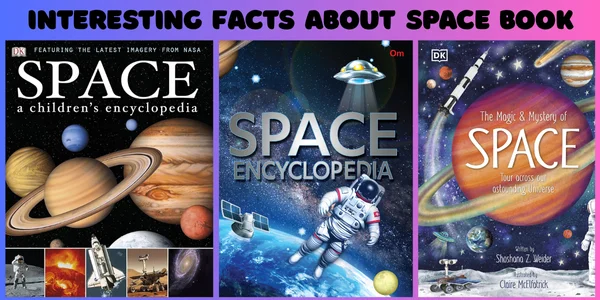Books have long been the gateway to our understanding of the universe. From ancient star charts to modern scientific volumes, space books offer a blend of imagination, knowledge, and discovery. These books don’t just inform — they inspire generations to look up and wonder about what lies beyond Earth.
Whether you’re a curious student, a seasoned astronomer, or just fascinated by the unknown, here are 10 interesting facts about space books that highlight their history, influence, and innovation.
1. The Oldest Known “Space Book” Dates Back Over 2,000 Years

One of the earliest known books about space is Almagest by Claudius Ptolemy, written in the 2nd century AD. It was a comprehensive treatise on astronomy and planetary movements, becoming the cornerstone of Western astronomical knowledge for over 1,400 years.
Almagest mapped constellations, explained lunar and solar movements, and introduced trigonometric methods to model celestial bodies.
2. Galileo’s Book Sparked a Scientific Revolution
In 1610, Galileo Galilei published Sidereus Nuncius (The Starry Messenger), the first scientific text based on telescopic observations. It revealed that the Moon had mountains, Jupiter had moons, and the Milky Way was made up of countless stars — contradicting long-held religious beliefs.
This groundbreaking book directly challenged the geocentric view and laid the foundation for modern astronomy.
3. NASA Publishes Free Space Books Online
Did you know you can explore the cosmos from your couch — for free? NASA offers a library of digital space books covering everything from Mars missions to astronaut life aboard the ISS. Many of these are available in PDF or ePub formats.
Titles like Hubble Focus, Mars Exploration, and Earth at Night can be downloaded at NASA.gov.
4. Carl Sagan’s “Cosmos” is One of the Best-Selling Science Books of All Time
Carl Sagan’s 1980 book Cosmos, which accompanied his famous TV series, remains one of the most influential and best-selling space books ever written, with over 5 million copies sold worldwide.
✨ “We are made of star-stuff” — this poetic line from Cosmos helped redefine how we see our place in the universe.
5. Augmented Reality (AR) is Transforming Space Books
In 2024, AR-enabled space books are becoming increasingly popular in classrooms and libraries. These interactive books allow users to point a smartphone or tablet at a page and see 3D renderings of planets, spacecraft, and galaxies.
Books like Solar System AR and DK’s Space: A Visual Encyclopedia bring astronomy to life like never before.
6. Space Books Are Taken to Space
Astronauts aboard the International Space Station (ISS) often carry space-themed books for both education and recreation. NASA’s Story Time From Space initiative features astronauts reading children’s books about space while floating in microgravity.
Popular books read from space include Ada Twist, Scientist and Max Goes to the Moon.
7. Astronauts Write Their Own Space Books
Firsthand accounts from astronauts provide a unique look into life beyond Earth. Notable titles include:
- An Astronaut’s Guide to Life on Earth by Chris Hadfield
- Endurance by Scott Kelly
- To Space and Back by Sally Ride
These books blend science, psychology, and personal reflection from those who’ve actually lived in space.
8. Space Books for Kids Are Fueling the Next Generation of Scientists
Children’s books like There’s No Place Like Space! from the Cat in the Hat’s Learning Library and Astrophysics for Young People in a Hurry by Neil deGrasse Tyson make space fun, accessible, and educational.
According to a 2023 survey, 68% of students interested in space careers were influenced by space-themed books in childhood.
9. Space Fiction Often Predicts Future Technologies
Science fiction space books — such as 2001: A Space Odyssey, The Martian, and Ender’s Game — often include technologies and concepts that later inspire real-world innovations, from AI assistants to Mars habitats.
Elon Musk cited The Hitchhiker’s Guide to the Galaxy as a major influence in his vision for interplanetary travel.
10. Modern Space Books Are More Inclusive Than Ever
In recent years, space books have begun to highlight the stories of historically underrepresented communities. Works like Hidden Figures and The Sky Is for Everyone showcase women and people of color who’ve made pivotal contributions to space science.
These inclusive narratives help break stereotypes and ensure the next generation sees space as a place for everyone.
Final Thoughts: Space Books Are Gateways to the Infinite
Space books have evolved from ancient manuscripts to immersive digital experiences, all while continuing to spark curiosity about the universe. They are as essential for learning about astronomy as they are for dreaming about what lies beyond the stars.
Whether you’re reading a kid’s storybook about rockets or a detailed NASA mission log, space books remind us that even though we may be grounded on Earth, our minds can travel light-years just by turning a page.



